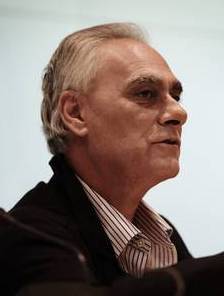I kneeled down to the floor, knees pressed hard to the floor, tears of rebirth rolling down my cheeks, forehead to the parquet, in prayer: Mubarak was leaving. The reaction was not unique. That day, throughout the country, while some of Hosni Mubarak’s supporters’ cried tears of sadness, millions let loose screams of freedom and tears of joy. Writing this now, five years later, I am, at once overcome with joy at such a grand, life-changing memory, and despondent for what the revolution has come to. Such is life for the millions who believed in the “revolution”.
Why has revolution been bracketed? For many readers the notion of bracketing the term “revolution” is sacrilegious. But questioning is not treason. Those who think so align themselves with darker neo-fascistic forces drunk on power that stalk the dark halls of Egypt government. So let us question then: did what happened during those 18 glorious days in 2011 constitute a revolution? Was it an uprising? Perhaps a coup? An intellectually discombobulating combination of all the aforementioned?
Initially, calls for protest on 25 January 2011 were largely disseminated via the Internet, with a reliance on Facebook. Numerous media outlets would later call it “The Facebook Revolution”. Names like Khaled Said, a young man hailing from Alexandria, would be the short term spark, as his murder by Egyptian police tapped into a long dormant mass anger against draconian Egyptian police practices. From there, Wael Ghonim, and others, would take over trumpeting the cause on a now-famous Facebook page, “We are all Khaled Said”, powered by the idea that ‘’today they killed Khaled… if I don’t act for his sake, tomorrow they will kill me’’. On YouTube, Asmaa Mahfooz, on 18 January 2011, said: “If you are a true man… if you have any dignity left, come down to the streets on the 25th.” Twitter, particularly once the uprising exploded, played a pivotal role in organisation and reporting. Together Facebook, Twitter and You Tube formed a revolutionary social media trinity.
The answer to the question of whether or not it was a revolution depends on the criteria. If it is individual moments of revolution, they are aplenty. A moment seared into the memories of millions: one young man stands alone, hands at hips, challenging a behemoth of an Armed Personnel Carrier that could have easily run him over – but he wins and stops the APC from attacking hundreds of demonstrators at the outbreak of confrontations. An Egyptian family standing in a balcony overlooking the faceoff shouts in hyper-emotional language: “My brave son, my brave son,” telling onlookers all they need to know about unity, and about the walls breaking down between the citizenry and the authorities. In letting fear go, Egyptians embraced the potential for freedom.
In days to come, countless Egyptians would challenge the beastly system’s apparatus. There was a brave soul who walked stoutly towards police forces lining an Alexandrian side street, lifting his shirt for the security forces to show the absence of weapons or explosives. That nameless youth is now one of at least 862 Egyptians murdered by the Mubarak regime during those tumultuous January/February days, gunned down in cold blood as two women screamed in horror from another balcony overlooking the scene. But such bravery made the impossible a reality.
On a larger scope, Tahrir Square was where revolutionary change was visible in action. A society that had a systematic sexual harassment problem, encased within a larger sexist framework, evaporated for 18 magical days. Not one woman reported harassment, women played leading roles, were respected, and ‘Tahrir World’ became an embodiment of what many civil rule supporters would call an egalitarian society. Women, such as prominent activist Mona Seif, explained that the spirit created in Tahrir Square carried the day. “The turning point for me was when I saw the number of people ready to face death for their beliefs,” Seif said.
Tahrir also presented a utopian religious harmony. During those 18 days in Tahrir, Egyptians of both faiths commonly guarded one another while each prayed during the extended sit in. For many felt the Deep State was responsible for a “divide and conquer” policy. In fact, to this day, many suspect that the Deep State may, at the very least, have strong ties to the bombing of a prominent church in Alexandria days before the outbreak of the uprising. For the cynical figures in circles of power, the unity witnessed in Tahrir Square was a death knell for the Mubarak regime.
In these many respects, 25 January was indeed revolutionary. But it was not a revolution. Feel it. Believe in it. Have it course through your progressive veins. But a revolution, it was not. Revolutions are not fleeting, nor transient. To succeed, a revolution must find its way into the tiniest crevices of a society’s machinery. Indeed, to take hold, it must invade the rotting carcass of a state apparatus being eaten away by inefficiency, corruption, and underemployment. This did not happen.
The youth who were the engine for those momentous 18 days were Young with a capital Y. Lacking political experience, moved by ethereal cries for “bread, freedom and social equality”, the youth failed to understand that persistence and political cynicism were a must to advance the revolution and its noble intent. Painful as it is to pronounce, what actually happened was a furious uprising that allowed us to stand, momentarily, atop the mountain. But tumble down, we did, not only due to the counter-revolution’s success but due, simultaneously, to our own failures.
Further complicating the deconstruction is semantic political calculus. Though a corrupt dictator who has recently been ruled a thief by the Egyptian judiciary, Hosni Mubarak, at the time of his removal, was the Egyptian president. The election of Mubarak was likely an act of political theatre more than a reflection of the people’s wishes – nonetheless it was official.
Within the arena of political science and history books, though a popularly-backed uprising, this was, in effect, a coup. There was no doubt the army would not stand for the passing of the baton from Mubarak to the “heir to the throne” Gamal Mubarak, who was, based on all indications, being groomed. In 2010, Al-Sisi purportedly “predicted that Mr. Mubarak would try to pass the country’s leadership to his son”. He was in prime position to posit this, as the country’s head of military intelligence.
Conflicting messages from the military were the rule during the uprising. In one important showdown, the “Battle of the Camels”, video evidence shows the army standing idle as regime supporters attacked demonstrators in Tahrir Square. That day, tanks stood still amidst the blood flowing in the square. But on another occasion, on the preceding day, where an F16 flew over Tahrir Square, and some analysts read this as a veiled threat, the army never followed through.
Finally, on the all-important day, 11 February 2011, with a long walk for hundreds of thousands of demonstrators from Tahrir Square to Itihadiya Palace, the army could have, should it have chosen, taken harsh measures against the vast crowds. But why do so when the people’s agenda overlapped with its own? By remaining silent and politically disciplined during those heady days, the army, it could be argued, was utilising the people as a bulwark to advance a non-military coup. Action by inaction.
When the next confrontation comes – and it shall, so long as Al-Sisi continues on the current path – those seeking change must learn the lessons of 25 January 2011.
The first step in understanding those lessons is to understand that while 25 January was heroic, wondrous, and uplifting, it was not a revolution, but an uprising that dared to dream.
To revolt, the changes must occur from within, and without overwhelming, in the process, the corrupt stranglehold of a military that has not relented in its chokehold of Egyptians since 1952.
Amr Khalifa is freelance journalist and commentator recently published by Ahram Online, Mada Masr, Muftah, the Tahrir Institute, and Arab Media Society. You can follow him on Twitter @cairo67unedited



